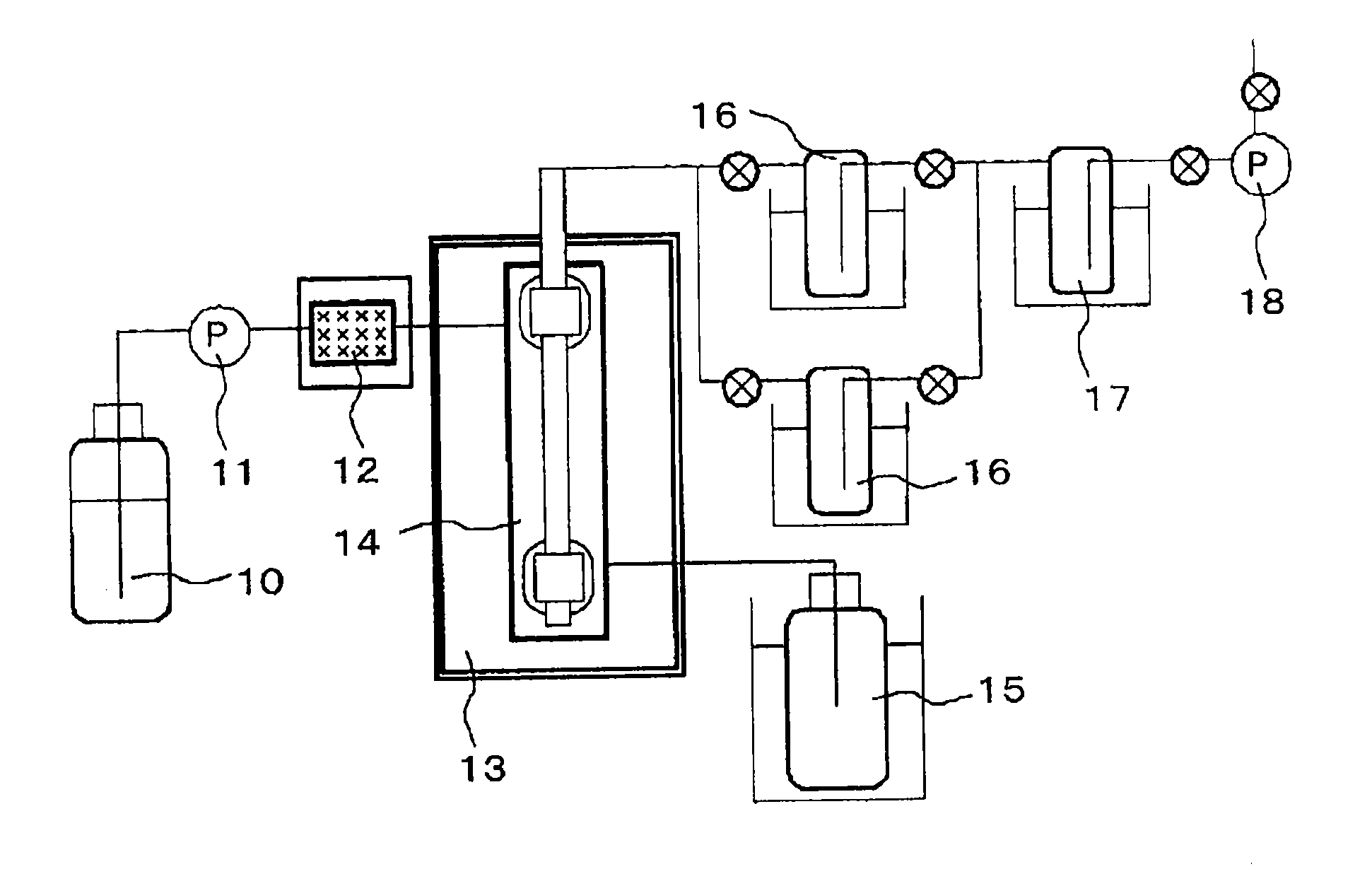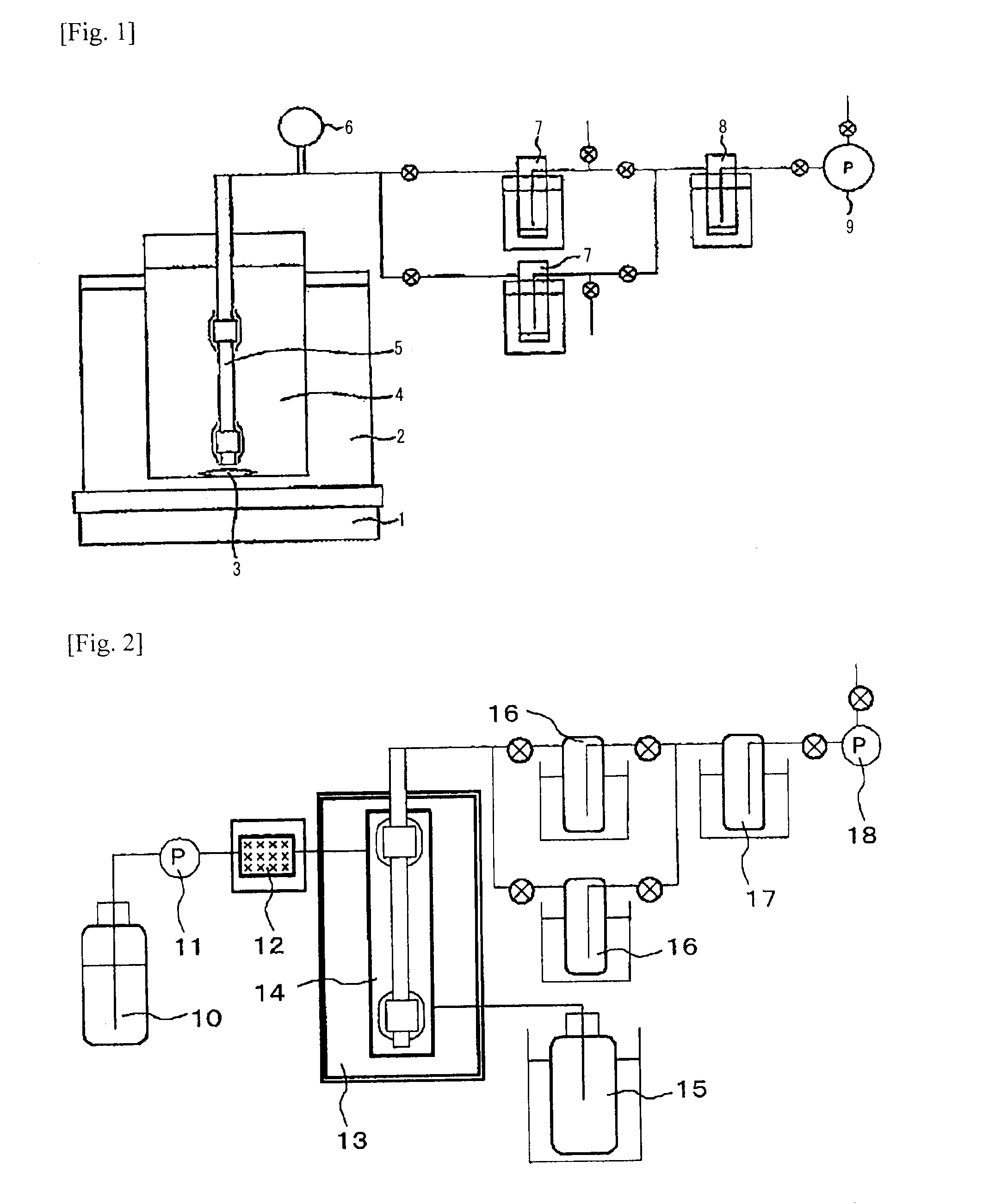Porous support-zeolite membrane composite
- Summary
- Abstract
- Description
- Claims
- Application Information
AI Technical Summary
Benefits of technology
Problems solved by technology
Method used
Image
Examples
example 1
[0247]An inorganic porous support-CHA-type zeolite membrane composite was produced under the same condition as in Comparative Example 1. The zeolite membrane composite was put in a Teflon®-made inner cylinder, as immersed in 135 g of desalted water, 2.5 g of tetraethoxysilane (hereinafter this may be abbreviated as “THOS”) and 1.4 g of sulfuric acid in the vertical direction therein, then the autoclave was sealed up, and heated at 100° C. for 20 hours under autogenous pressure. After a predetermined period of time, this was left cooled and the zeolite membrane composite was taken out and washed with desalted water. Hereinafter this treatment is referred to as “silylation treatment 1”. The pH of the processing solution used in the silylation treatment 1 was 1.0, the H+ concentration thereof was 0.1 mol / l, and the Si content thereof was 0.24% by mass.
[0248]After processed for the silylation treatment 1, the zeolite membrane composite was analyzed through SEM-EDX, in which the molar ra...
example 2
[0252]An inorganic porous support-CHA-type zeolite membrane composite was produced under the same condition as in Comparative Example 1. The zeolite membrane composite was put in a Teflon®-made inner cylinder, as immersed in 135 g of desalted water, 2.5 g of tetraethoxysilane (TEOS) and 1.62 g of acetic acid in the vertical direction therein, then the autoclave was sealed up, and heated at 100° C. for 20 hours under autogenous pressure. After a predetermined period of time, this was left cooled and the zeolite membrane composite was taken out and washed with desalted water. Hereinafter this treatment is referred to as “silylation treatment 2”. The pH of the processing solution used in the silylation treatment 2 was 2.9, the H+ concentration thereof was 0.001 mol / l, and the Si content thereof was 0.24% by mass.
[0253]After processed for the silylation treatment 2, the zeolite membrane composite was analyzed through SEM-EDX, in which the molar ratio of SiO2 / Al2O3 in the zeolite membran...
example 3
[0260]An inorganic porous support-CHA-type zeolite membrane composite was produced under the same condition as in Comparative Example 1.
[0261]The zeolite membrane composite was put in a Teflon®-made inner cylinder, as immersed in 135 g of desalted water, 2.5 g of tetraethoxysilane (TEOS) and 4.7 g of phosphoric acid in the vertical direction therein, then the autoclave was sealed up, and heated at 100° C. for 20 hours under autogenous pressure. After a predetermined period of time, this was left cooled and the support-zeolite membrane composite was taken out and washed with desalted water. Hereinafter this treatment is referred to as “silylation treatment 3”. The pH of the processing solution used in the silylation treatment 3 was 1.3, the H+ concentration thereof was 0.05 mol / l, and the Si content thereof was 0.24% by mass.
[0262]After processed for the silylation treatment 3, the zeolite membrane composite was analyzed through SEM-EDX, in which the molar ratio of SiO2 / Al2O3 in the ...
PUM
| Property | Measurement | Unit |
|---|---|---|
| Fraction | aaaaa | aaaaa |
| Percent by mass | aaaaa | aaaaa |
| Structure | aaaaa | aaaaa |
Abstract
Description
Claims
Application Information
 Login to View More
Login to View More - Generate Ideas
- Intellectual Property
- Life Sciences
- Materials
- Tech Scout
- Unparalleled Data Quality
- Higher Quality Content
- 60% Fewer Hallucinations
Browse by: Latest US Patents, China's latest patents, Technical Efficacy Thesaurus, Application Domain, Technology Topic, Popular Technical Reports.
© 2025 PatSnap. All rights reserved.Legal|Privacy policy|Modern Slavery Act Transparency Statement|Sitemap|About US| Contact US: help@patsnap.com


